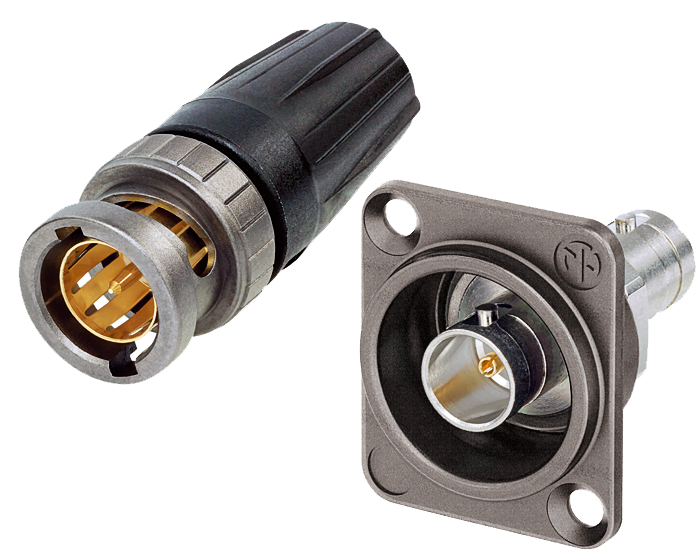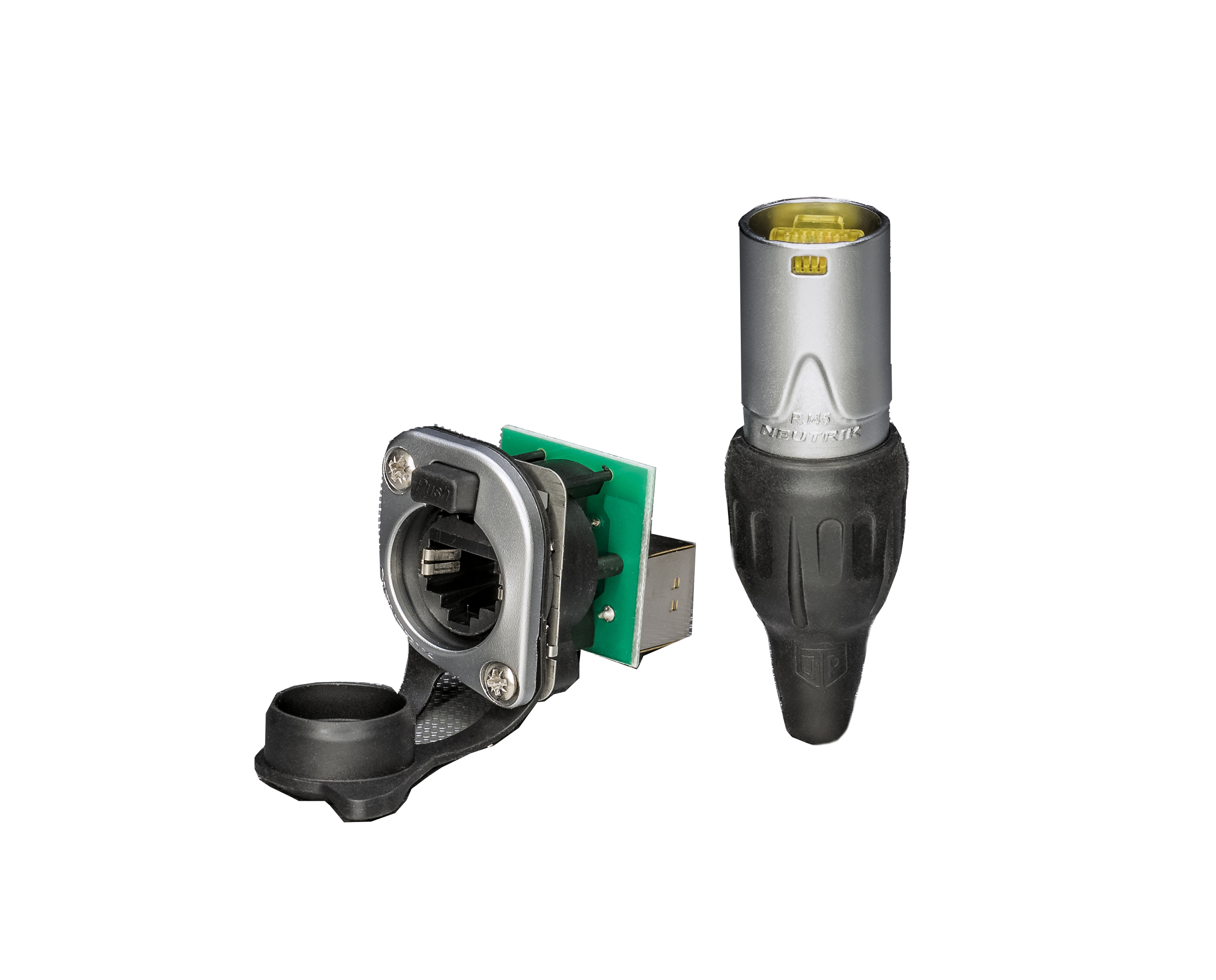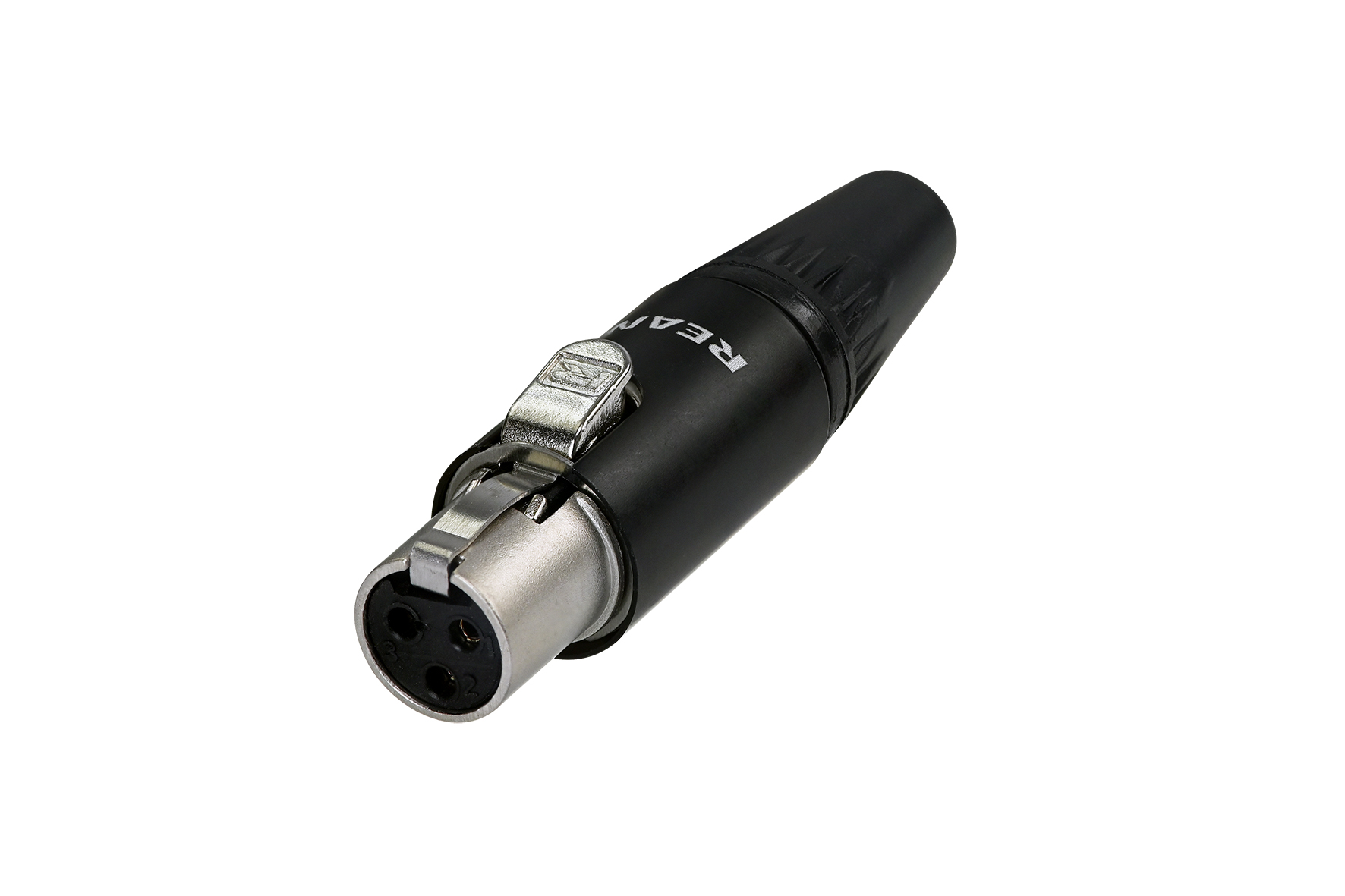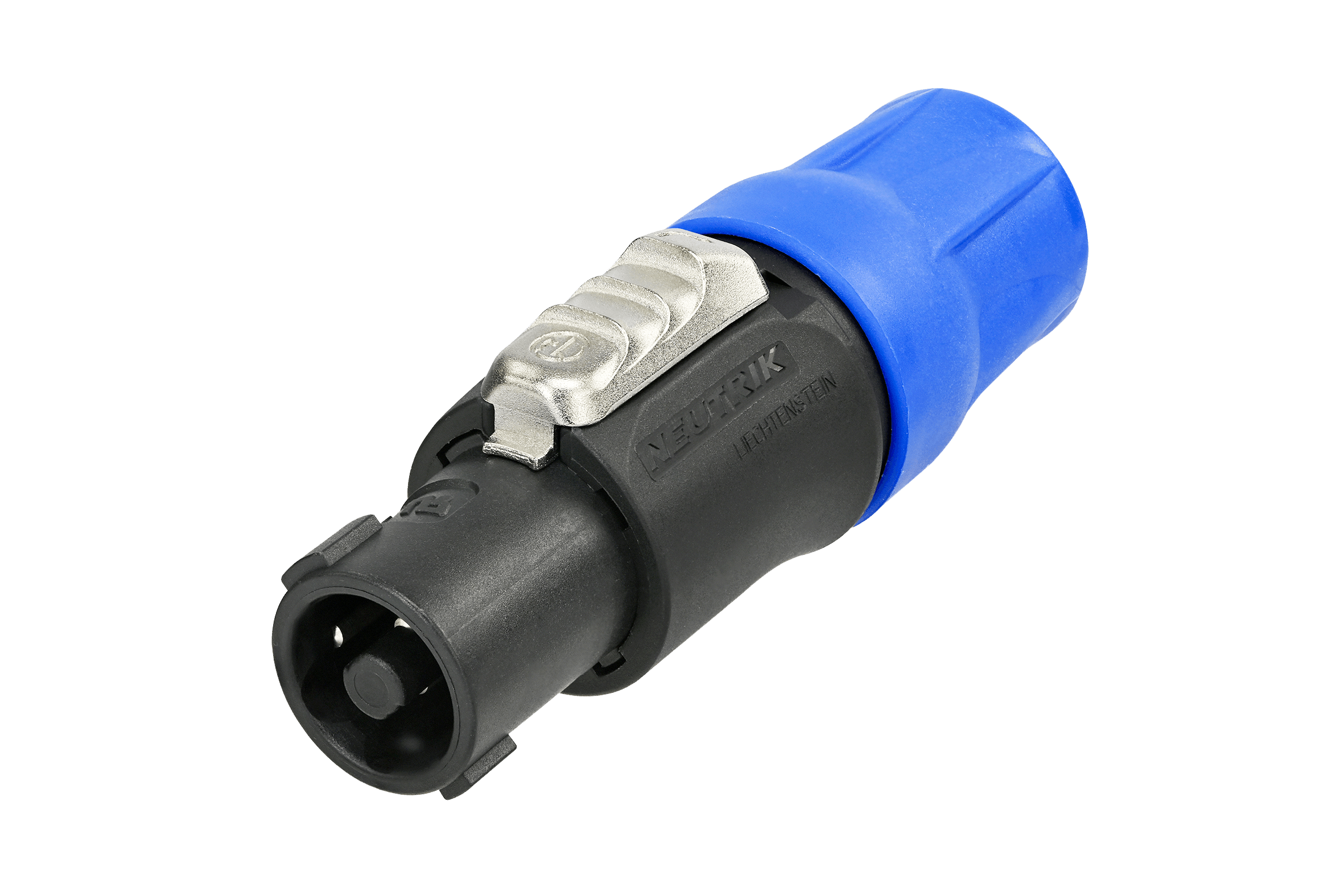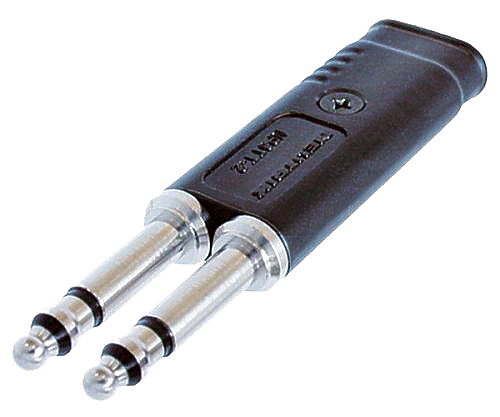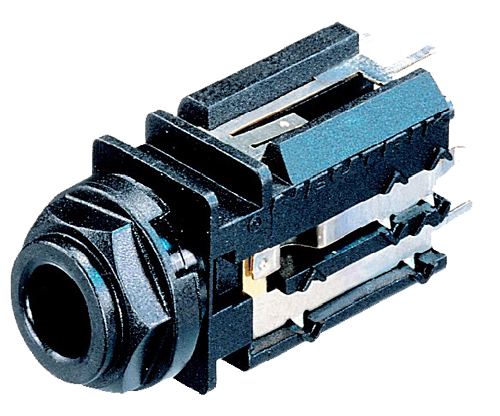Analog and Digital Signal Connectors Used in Professional AV
The audiovisual industry is a dynamic environment for connected technologies, as sound, light, video, and production technologies converge to elevate live and digital experiences.
The professional audiovisual (AV) industry is characterized by dynamic, often-changing configurations. The successful creation, production, and broadcasting of live events and digital experiences depend on precision interconnects that can deliver power and a clean signal in a variety of environments, including outdoor installations.

In a television studio, reporters and guests change frequently, necessitating microphone and lighting changes. Various sets are utilized throughout the day and week, requiring patching of cameras and microphones from different locations to a central control room.
Remote broadcasts may last a few minutes (for example, news conferences), a few hours (sporting events or remote interviews), or longer periods of time (such as multi-day golf tournaments or the Olympic Games). Each scenario requires video and audio capture, monitoring, and cueing. Additionally, devices that allow technicians and on-air personalities to communicate with one another (e.g., an intercom) are typically crucial.
In a music recording studio, microphone, processor, and mixer settings are regularly struck and re-built. Such reconfigurations often occur on a daily or more frequent basis. A string quartet, rock band, jazz combo, big band, and symphony orchestra may all be recorded in the same studio over the course of a week. Equipment must be commissioned accordingly.
Live AV — whether for corporate events, houses of worship, touring shows, local bars, or other functions — is similarly dynamic.
To ensure the highest reliability in these frequently changing environments, the AV industry has settled on signal connectors that are rugged, easy to handle (not too big and not too small), typically (but not always) relatively easy to terminate, and which have high lifetime mating cycles. Most of these connectors have a long history of use specifically within the AV industry. However, newer connectors may encapsulate standard data connectors within them. This allows AV connector manufacturers to capitalize on the economy of scale of the IT industry which is enormous compared to professional AV.
Audiovisual Connectors for Video Signals
75-ohm BNC connectors have for many decades been the connector of choice for distributing video signals among cameras, routers, and video monitors. These technologies can route high-definition signals with single-frame accuracy (roughly 1/30 of a second) using SDI (serial data interface) protocols. Newer generations of BNC connectors from Neutrik, Canare, and other companies accommodate the higher data rates required by 4K and higher resolutions.
A recent trend towards routing video signals with IP protocols rather than SDI has accompanied the use of standard data connectors like LC and ST fiber optic connectors and RJ45 connectors. Neutrik is an example of a company whose audiovisual connector products encapsulate these data connectors within rugged, locking shells, such as within its etherCON RJ45-based and opticalCON ADVANCED LC- and MTP-based systems.
Some broadcast television cameras and their associated camera control units (CCUs) utilize a single cable assembly to provide power and sense operations over copper wires while also transmitting data over fiber optics. These include the SMPTE 304M connector line developed by LEMO Connectors and manufactured by various companies, including LEMO, Canare, and Winchester/Kings. Alternatives include expanded beam connectors from companies like Stratos and Connex Gmbh as well as various Neutrik opticalCON offerings.
Large live events — like sporting events that have multiple video and audio feeds — often rely on a routing backbone comprised of a dozen or more fiber optic strands. These fibers can be routed using traditional mil-spec connectors like Delphi DFOCA connectors (now an APTIV line) as well as more modern technologies such as Neutrik’s opticalCON MTP 12/24.
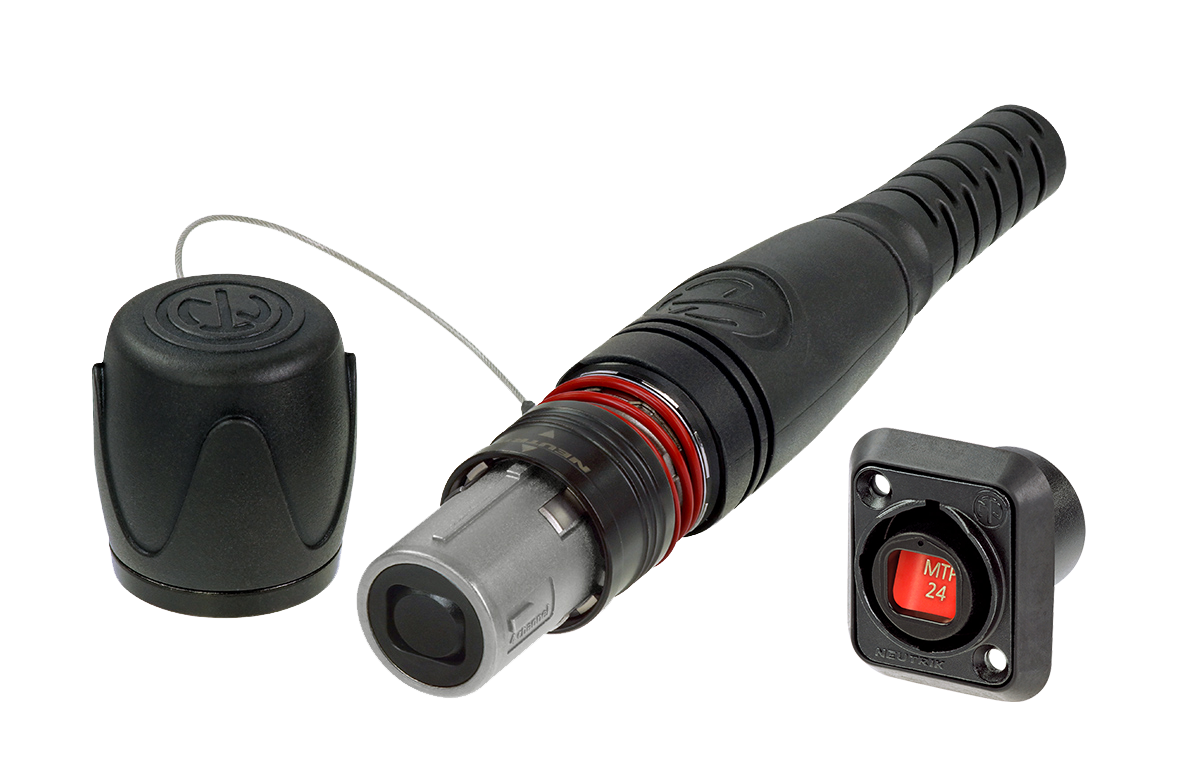
Neutrik’s opticalCON MTP chassis connector and cable family
Audiovisual Connectors for Microphones and Intercoms
By the 1970s, XLR connectors, developed by Cannon (now ITT Cannon), were established as the default connectors for microphones and portable intercom systems in the AV industry. XLRs are available in both standard and miniaturized sizes (Switchcraft Tini-QG, REAN Tiny XLR, etc.). Three-contact connectors predominate, but connectors with more contacts are often deployed for intercoms with multiple channels, stereo and multi-capsule microphones, and tube microphones.
Audiovisual Connectors for Live-Event Power Amplifiers and Loudspeakers
The audiovisual connections between power amplifiers and loudspeakers require special attention due to their typically high amperages. Unlike the “set and forget” connections made in home AV, professional AV’s requirement for frequent reconfiguration demands amplifier-to-loudspeaker connectors that are safe and locking. Amphenol developed its EP connectors for this purpose. Neutrik’s speakON, introduced later, has become the industry standard. Two-, four-, and eight-contact products (suitable for up to four-driver, subwoofer/woofer/midrange/tweeter loudspeakers) are available.
Audiovisual Connectors for Other Audio Equipment
Downstream audio processing and monitoring devices such as equalizers, dynamic controllers, and studio loudspeakers often feature a mix of both XLR connectors and A-gauge ¼” plugs and jacks. Over 100 years old, ¼” connectors are one of the longest-lasting connector technologies still in use.
The telephone switchboard concept was adapted for audio patch panels which allow audio engineers to quickly reconfigure signal chains. B-gauge ¼” plugs and jacks are specialty connectors which offer enhanced operation and durability within patch panel applications. Bantam (TT) plugs and jacks were developed by the audio industry to double the density of connections available in any given space. All of these connectors may have three contacts (tip, ring, and sleeve) for either stereo operation or balanced wiring, or two contacts (tip and sleeve only) for unbalanced wiring.
As with video, audio device manufacturers are also adopting IP routing. Large, heavy, cumbersome, and expensive analog snake cables with multipin connectors like Ramtech’s Ramlatch connectors are giving way to RJ45 connections, often equipped with Neutrik etherCON. For higher channel counts and/or longer distances, fiber optic connectors such as Stratos (a Cinch brand) HMA expanded beam connectors and Neutrik opticalCON are deployed.
Audiovisual Connectors for Electric and Electronic Musical Instruments
Electric and electronic musical instruments (electric guitars and their associated amplifiers, synthesizers, and DJ decks) typically use tip-sleeve A-gauge ¼” connectors. Some higher-quality equipment provides balanced outputs using tip-ring-sleeve jacks and/or XLR connectors.
To mitigate the risks of intermittent connections, amplifiers and loudspeakers prone to high vibration (such as bass guitar amplifiers and cabinets) may be equipped with locking speakON connectors.
Audiovisual Connectors for Live Lighting, Special Effects, and Associated Consoles
Moving-head lights, networked fog machines, lasers, pyrotechnic devices, and other visual technologies are networked to their control consoles and to one another using five-contact XLR connectors (and, more recently, three-contact XLR connectors). etherCON is increasingly deployed to take advantage both of newer networking capabilities and the economy of using category cabling.
Audiovisual Connectors for LED Display Walls
Today’s breathtakingly large displays are typically constructed from multiple tiles that are mechanically locked together and then connected, tile-to-tile, for power and data. Data connections from the video controller to the tiles — and between the tiles themselves — are typically made using rugged etherCON (RJ45 based) and opticalCON (LC-based) connections.
Very large displays, such as those that ring sports stadiums, may have cabling runs that exceed the 100-meter limitation of traditional copper cabling and therefore are typically best connectorized with fiber optics such as those discussed above.
Many more applications and connectors exist specifically within the professional AV world, including specialized power connectors. Pro AV is a sophisticated and specialized market served by a variety of AV-specialized connector manufacturers.
Like this article? Check out our other New Technology, fiber optics, and cable articles, our Consumer and Wire and Cable Assemblies Market Pages, and our 2021 and 2020 Article Archives.
- Connectors in Concert - August 2, 2022
- Analog and Digital Signal Connectors Used in Professional AV - June 29, 2021
